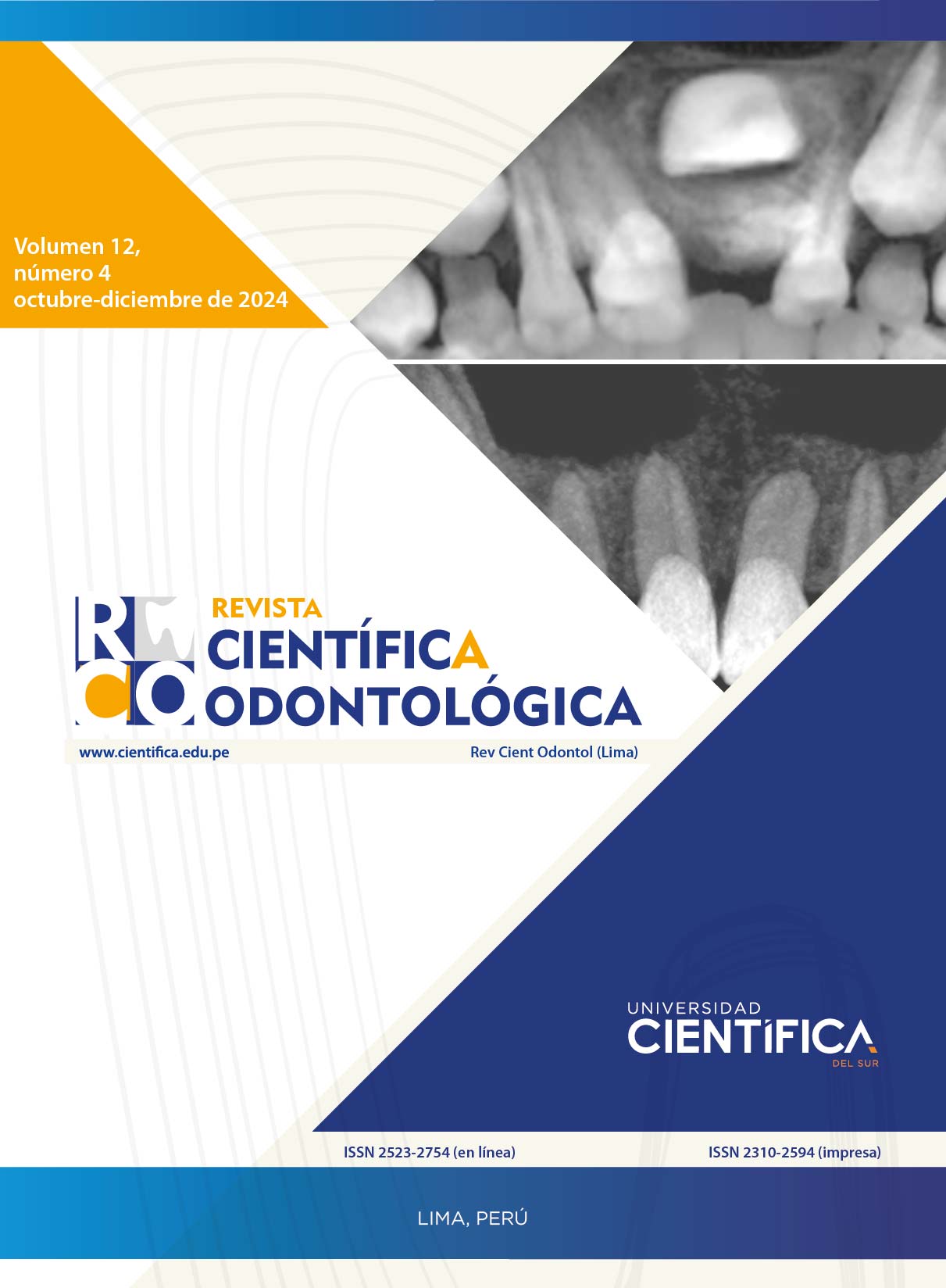CLASSIFICATION OF THE LEVEL AND DEGREE OF CALCIFICATION OF ROOT CANALS BY CONE-BEAM COMPUTED TOMOGRAPHY
DOI:
https://doi.org/10.21142/2523-2754-1204-2024-219Keywords:
dental pulp cavity, dental pulp calcification, cone-beam computed tomography, endodonticsAbstract
Objective: To evaluate the frequency of root canal calcification (RCC) and to propose a classification of the level and degree of RCC calcification by cone beam computed tomography (CBCT). Methods: The sample consisted of tomographic volumes of 82 patients of both sexes (female n=61, 74.4%; male n=21, 25.4%), aged 41-71 years, of which 109 RCC were analyzed. The location of the tooth in the maxilla, type of tooth affected, type of calcified canal, level and degree of calcification were recorded; a classification was designed for the latter. Thirty percent of the sample was reevaluated by three independent observers to validate the proposed classifications, obtaining a ROC curve. Results: The highest frequency of ROC was found in the 40-49 years age group (23.85%), in the maxilla (n= 77, 70.64%) and second quadrant (44/109-40.4%). Monoradicular (43/109-39.0%) and single canal (51/109-46%) teeth were the most affected. Cervical-mid-apical calcification (31/109-28.4%) and calcification grade 3 (closed) (73/109-67%) had the highest frequencies. These results showed a significance level of p<0.05. The correlation for the evaluators in the ROC curve was on average 0.89, demonstrating dominance in the observation of the variables. Conclusions: RCC was found more frequently in monoradicular and single root canal upper teeth, in individuals between 40 and 49 years of age. The proposed classification can be used as a visual guide to determine the level and degree of RCC through CBCT.
Downloads
Downloads
Published
Issue
Section
License
Copyright (c) 2024 María Eugenia Terán-Miranda

This work is licensed under a Creative Commons Attribution 4.0 International License.

Este obra está bajo una licencia de Creative Commons Reconocimiento 4.0 Internacional.












